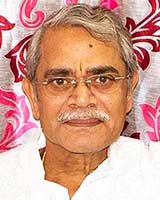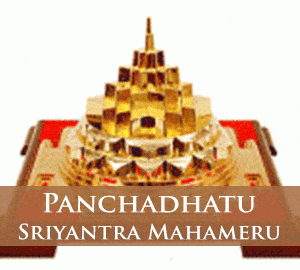After reducing Chitor to submission, ‘Ala-ud-din sent an army to MaIwa. Rai Mahlak Deva of Malwa and his pardhan, Koka, opposed it with a large force but were defeated and slain in November or December, 1305. ‘Ain-ul-mulk, the Sultan’s confidential chamberlain, was appointed Governor of Malwa. This was followed by the Muslim conquest of Ujjain, Mandu, Dhar and Chanderi. Thus by the end of the year A.D. 1305, practically the whole of Northern India fell under the sway of Khalji imperialism, which was then emboldened to embark on its career of expansion in the Deccan.
Although there was an earlier intercourse of the west coast of India with the Muhammadans, chiefly through commerce, the first Muslim conquest of the Deccan was effected by the Khaljis under ‘Ala-ud-din. His southern campaigns were the outcome of his political as well as economic motives. It was but natural for an ambitious ruler like him to make attempts for the extension of his influence over the south after the north had been brought under control. The Deccan’s wealth was also “too tempting to an enterprising adventurer”.
The existing political conditions in India beyond the Vindhyas afforded ‘Ala-ud-din an opportunity to march there. It was then divided into four well-marked kingdoms. The first was the Yadava kingdom of Devagiri, under its wise and efficient ruler, Ramchandradeva (1271-1309). The tract known as Telingana in the east, with its capital at Warangal (in the Nizam’s dominions), was under Prataparudradeva I of the Kakatiya dynasty. The Hoysalas, then under their ruler, Vira Ballala III (1292-1342), occupied the country now included in the Mysore State with their capital at Dorasamudra, modern Halebid, famous for its beautiful temples. In the far south was the kingdom of the Pandyas, stretching over the territory called M’abar by the Muslim writers and including the modern districts of Madura, Ramnad and Tinneveily. It was then ruled by Maravarman Kulasekhara (1268-1311). who greatly contributed to its prosperity by encouraging commerce. There were also some minor rulers like the Telegu-Choda chief, Manma-Siddha III, ruling in the Nellore district, the Kalinga Ganga king, Bhanu-deva, reigning in Orissa, the Kerala king, Ravivarman, ruling from Kollam (Quilon), and the Alupa chief, Bankideva-Alupendra, ruling from Mangalore. There was no love lost among the Hindu kingdoms of the south. During ‘Ala-ud-din’s raid on Devagiri in 1294, Ramchandradeva received no help from any of them. Hoysala kings at times attacked Ramchandradeva of Devagiri. Internal dissensions among the States of the south invited invasions from the north.
In March, 1307, ‘Ala-ud-din sent an expedition under Kafur, now entitled Malik Naib (lieutenant) of the kingdom, against Ramchandradeva of Devagiri, who had withheld the payment of the tribute due on account of the province of Ellichpur, for the last three years, and had given refuge to Rai Karnadeva II, the fugitive ruler of Gujarat. Assisted by Khwaja Haji (deputy ariz-i-mamalik), Kafur marched through Malwa, and advanced to Devagiri. He laid waste the whole country, seized much booty and compelled Ramchandradeva to sue for peace. Ramchandradeva was sent to ‘Ala-ud-din at Delhi, where the Sultan treated him kindly and sent him back to his kingdom after six months. Ramchandradeva continued to rule thenceforth as a vassal of the Delhi Sultanate and regularly remitted revenue to Delhi. Rai Karna’s daughter, Devala Devi, was captured by the invader and taken by Alp Khan, governor of Gujarat, to Delhi, where she was married to the Sultan’s eldest son, Khizr Khan.
An expedition sent by ‘AIa-ud-din against Kakatiya Prataparudradeva in A.D. 1303 had failed. But the humiliation of the Yadavas encouraged him to make a second attempt in 1309 to bring the Kakatiya king under his authority and fleece him of his wealth. The Sultan had no desire to annex the kingdom of Warangal, the administration of which from a great distance would prove to be a difficult task. His real object was to acquire the vast wealth of this kingdom and make Prataparudradeva acknowledge his authority. This is clear from his instruction to Kafur, who commanded the invading army: “If the Rai consented to surrender his treasure and jewels, elephants and horses, and also to send treasure and elephants in the following year, Malik- Naib Kafur was to accept these terms and not to press the Rai too hard”. On reaching Devagiri, the Delhi army was assisted by the now humble Ramchandradeva, who also supplied it with an efficient commissariat, as it marched towards Telingana. Prataparudravdeva tried to resist the invaders by shutting himself up in the strong fort of Warangal. But the fort was besieged with such vigour that, being reduced to extremities, the Kakatiya ruler had to open negotiations for peace in March, 1310. He surrendered to Kafur a hundred elephants, seven thousand horses, and large quantities of jewels and coined money and agreed to send tribute annually to Delhi. Kafur then returned to Delhi through Devagiri, Dhar and Jhain with an immense booty, carried, as Amir Khusrav writes, “on a thousand camels groaning under the ‘weight of treasure”‘.
After these successes, ‘Ala-ud-din soon determined to bring under his authority the kingdoms in the far south, renowned for the enormous wealth of their temples. On the 18th November, 1310, a large army under the command of Malik Naib and Khwaja Haji marched from Delhi against the kingdom of the Hoysalas, and passing by way of Devagiri reached Dorasamudra. The Hoysala king, Vira Ballala III, was taken by surprise in the flat attack on his capital. Taking into consideration the overwhelming strength of the invaders, he submitted to them and surrendered all his treasures. The victors further captured thirty-six elephants and plundered a vast quantity of gold, silver, jewels and pearls from the temples. Malik Naib despatched to Delhi all the captured property and also a Hoysala Prince. The Prince returned to Dorasamudra on the 6th May, 1313, amidst the great rejoicing of the people there. But the Hoysalas became vassals of the Delhi Sultan.
After twelve days’ stay in the city of Dorasamudra, Malik Naib turned his attention towards the country of Ma`bar, extending over nearly the whole of the Coromandel Coast and along the Western coast from Quilon to Cape Comorin. The Pandyas then ruled over this territory. A fratricidal war between Sundara Pandya a legitimate son of the Pandya ruler, Kulasekhara, and Vira Pandya, his illegitimate but favorite son, gave an opportunity to Malik Naib for his meditated invasion of Ma’bar. Sundara Pandya, enraged at his father’s partiality for Vira Pandya, who had been nominated as his successor, murdered the king towards the end of May, 1310, and seized the crown for himself. But he was defeated in an engagement with his brother about the month of November of the same year, and thus, hard pressed, sought Muslim help.
Malik Naib marched to the Deccan at the head of a large army. On the 14th April, 1311, he reached Madura, the capital of the Pandyas, which he found empty, for, on hearing of his advance, Vira Pandya had left the city ” with the Ranis “. But he sacked the city and captured an immense booty, which, according to Amir Khusrav, consisted of five hundred and twelve elephants, five thousand horses and five hundred maunds of jewels of various kinds, such as diamonds, pearls, emeralds and rubies. If Amir Khusrav is to be believed, Malik Naib advanced as far as Rameswarara. He returned to Delhi on the 18th October, 1311, carrying with him vast booty consisting of 612 elephants, 20,000 horses, 96,000 maunds of gold, and some boxes of jewels and pearls. Thus the “country of Ma’bar came under the control of the imperialists ” and remained a dependency of the Delhi Sultanate till the early part of Muhammad Tughluq’s reign. In 1312 Sankaradeva, son of Ramchandradeva, withheld the tribute promised by his father to the Delhi Sultan and tried to regain his independence. At this, Malik Naib again marched from Delhi, and defeated and killed Sankaradeva. Thus the whole of Southern India had to acknowledge the away of the Delhi Sultan.
But the raids of Malik Naib, associated with the sack of cities, the slaughter of the people, and the plunder of temples, “made an immense impression” on the indigenous inhabitants of South India. They had no other course but to submit, for the time being, to the mighty forces of the invader, but they must have harboured a feeling of discontent in their hearts, which ultimately found expression in the rise of Vijayanagar as its political fruit.











